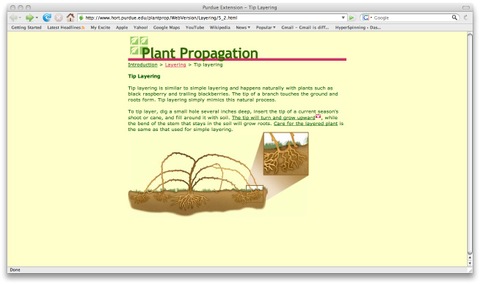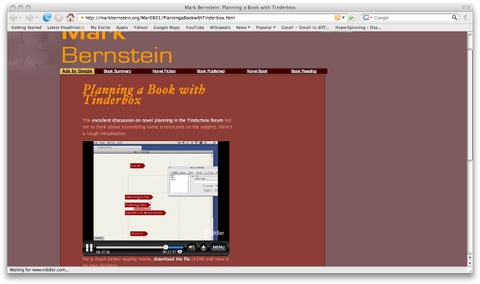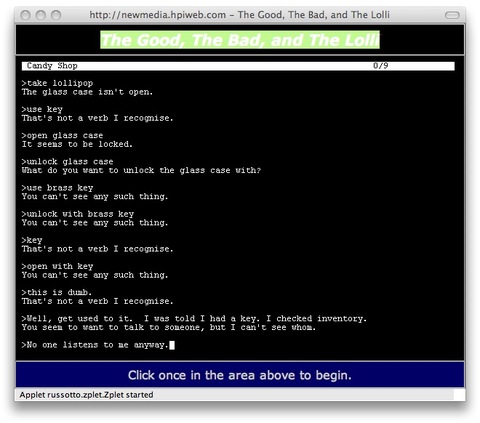I keep checking into the Hypertextopia Grand Library and have noticed several things going on. One isn’t good news for hypertext: many have tried it out and left their work hanging there without completion. Another is great news: many have used the format as a teaching tool.
In the first scenario, folks seem to have either become frustrated with the method of writing–whether it be a creative effort or a means of outlining an idea. Does the thought of entering a new writing space without the prior work being visible sever the thought process in some way? Does a blank space promote blankness of what comes next? Do we need some tie-in to the previous thought to produce the flow that’s based on a visual confirmation of its existence?
There’s also the possibility that the technical manipulation of working within a hypertext program is interfering with the idea being produced. Many simply will not wish to be bothered by pulling out threads and new text boxes to continue onward. Many may become frustrated with the necessary requirements of attending to the program in the implementation of story–and I use ‘story’ here in both fiction and non fiction terms.
But isn’t this just a case of a learning curve? That once the program is mastered through knowledge and skill it is no more an impediment to the thinking-to-writing it down process than turning a page in a notebook? Even there, in the most traditional way of writing, there’s a momentary break in procedure that might inhibit a train of thought, I suppose. But are we really so easily put off track? It’s hard for me to fathom that in this day of multitasking and working with computer screens holding several pages open (Storyspace allows this concept, as does Mac’s Spaces that shows up to four working screens in full view) that writers are so reluctant to assimilate the data via a natural memory chain–the human brain.
I’d be interested in learning if what turns these writers off to hypertext writing is the same bugaboos that appear to turn off so many readers; one idea is the fear or sense of losing placement–fear of getting lost.
On the good side, I see an author, Paul Allison, who appears to be using Hypertextopia’s facilities as a teaching tool on weblogging, and on hypertext poetry. On the latter, Paul gives us an explanation:
"Here are the steps I asked 6th, 7th, and 8th graders to follow in creating their first hypertext poem in Hypertextopia"
And here’s the opening text space:
Make a chain of 15 or 20 memories
1.Join or Log in here at Hypertextopia.
2. Add a new story. Title: Memory Chain (You will change this later.)
3. Double-click
on "The Beginning" and replace the title with an object in the room.
4. Save with the green arrow.
5. What story from your life does this object remind you of? (This is not the same as word association.)
6. Move
the cursor across the bottom of the box that you just created, and find
the straight-up-and-down, vertical arrow. Drag this arrow out and let
go to create another box.
7. In the title box, type the memory/story that the object reminds you of, and save it with the Green arrow.
8. Move
the cursor across the bottom of the new box and find the vertical
arrow. Create another box, and write another memory in the title of
that box.
9. Continue making a "memory chain" of boxes until you get to 15 or 20 boxes.
I love it. Both Paul’s dedication to the hypertext theory of writing and his use of it to promote acceptance of the form at an early stage in the academic journey. Maybe this is what we need to do; catch them into the net before they hit the college campus.
We all have our own comfort zones and we all have some preset formulas that encourage or discourage further venture beyond our borders. Just as many in the plus-fifty age group are reluctant to try out computer technology, those who have been brought up in its environment are disdainful of organizing their work and their lives with paper and pencil.
Seems to me we’re always at a crossroads.




 The Lost Children: A Charity Anthology
The Lost Children: A Charity Anthology